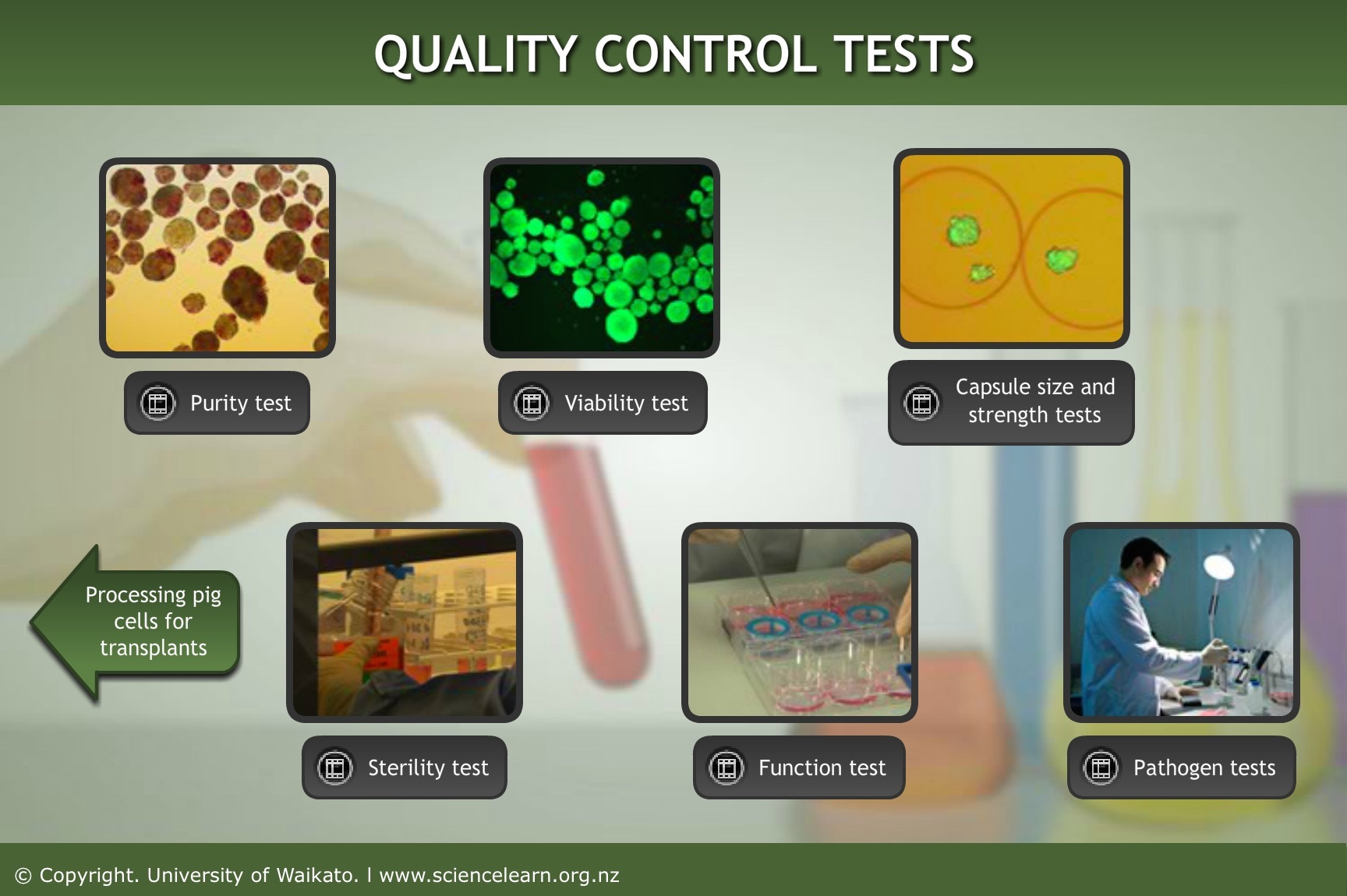An overview of the quality control checks used within the process to make a pig cell transplant treatment for type 1 diabetes.

Rigorous quality control checks are an important part of the process that Living Cell Technologies undertake when extracting pig islets, which contain insulin-producing cells, to treat people with type 1 diabetes.
Click on any of the labels in this interactive to view short video clips to learn more.
The main steps of the extraction process and can be viewed in the Processing pig cells for transplant interactive.
Transcript
7. Purity test
Peter Hosking - Living Cell Technologies
It’s a purity test where we try to determine the amount of insulin-producing cells, and so essentially we use a DTZ stain, which stains those cells sort of a red colour.
8. Viability test
Peter Hosking - Living Cell Technologies
The viability test tells us that the cells are alive. For viability, we use a stain, it’s called AOPI, and the viable cells stain up in a green colour. If the cells weren’t alive and metabolising, they wouldn’t pick up the stain.
9. Capsule size and strength tests
Peter Hosking - Living Cell Technologies
So other QC tests that we do are really focused on the capsules themselves rather than the islets, and these are tests where we’re looking at the uniformity of the capsules, the size of the capsules, the quality of the coating. And the capsule obviously is key to our process because it protects the islet from the immune system of the patient. We don’t want to see any irregular shapes, we don’t want to see any large capsules or very small capsules, and we don’t want to see any islets that are partially coming through capsules. All of these things could break capsules and damage them, so we’re looking for very uniform perfect spherical capsules and ideally one islet close to the middle.
10. Sterility test
Peter Hosking - Living Cell Technologies
Well, one of the other tests done after encapsulation and in fact throughout the process, because it is an aseptic process and done in sterile conditions, clearly the sterility of our final product is of critical importance, so we do monitor that at various stages of the process – certainly after they’ve been harvested, 2 days after the encapsulation, also just before we transport them for a patient, we’ll take a second check.
11. Function test
Peter Hosking - Living Cell Technologies
The SGS assay is one of our critical quality control parameters. SGS stands for static glucose stimulation, and essentially, the assay is such that it challenges the islet with firstly a low concentration of glucose, then a high concentration of glucose, then a low concentration of glucose again. And so we measure the amount of insulin that is excreted at the low glucose level, then at the high glucose level, and then obviously when there’s no glucose there again, we want the cell to switch off and stop pumping out insulin, and so we also check that that happens. And the SGS assay gives us confidence that the cells that we’re using for patients will in fact produce insulin in the sufficient quantities to cause a good clinical outcome.
12. Pathogen tests
Olga Garkavenko - Living Cell Technologies
A pathogen is a microorganism that can cause disease in a host. Our main task is to ensure the safety of the tissue that is transplanted from animals to humans and also to follow up our patients to make sure that they did not acquire any silent infection or any unknown pathogens from our pigs. So we have to design a very rigorous programme and search for pathogens that do not cause any disease in animals but can for humans.


